Eugene Parker Meets Parker Solar Probe
Posted on 2017-10-03 15:31:39On Tuesday, October 3, 2017, Eugene N. Parker, professor emeritus at the University of Chicago, visited the spacecraft that bears his name: NASA’s Parker Solar Probe. This is the first NASA mission that has been named for a living researcher, and is humanity’s first mission to the Sun.
Parker proposed the existence of the constant outflow of solar material from the sun, which is now called the solar wind, and theorized other fundamental stellar science processes. On Oct. 3, 2017, he viewed the spacecraft in a clean room at the Johns Hopkins Applied Physics Laboratory in Laurel, Maryland, where the probe was designed and is being built. He discussed the revolutionary heat shield and instruments with the Parker Solar Probe team and learned how the spacecraft will answer some of the crucial questions Parker identified about how stars work.
NASA’s Parker Solar Probe is scheduled for launch on July 31, 2018, from Cape Canaveral Air Force Station, Florida. The spacecraft will explore the Sun’s outer atmosphere and make critical observations that will answer decades-old questions about the physics of stars. The resulting data will also improve forecasts of major eruptions on the sun and subsequent space weather events that impact life on Earth, as well as satellites and astronauts in space.
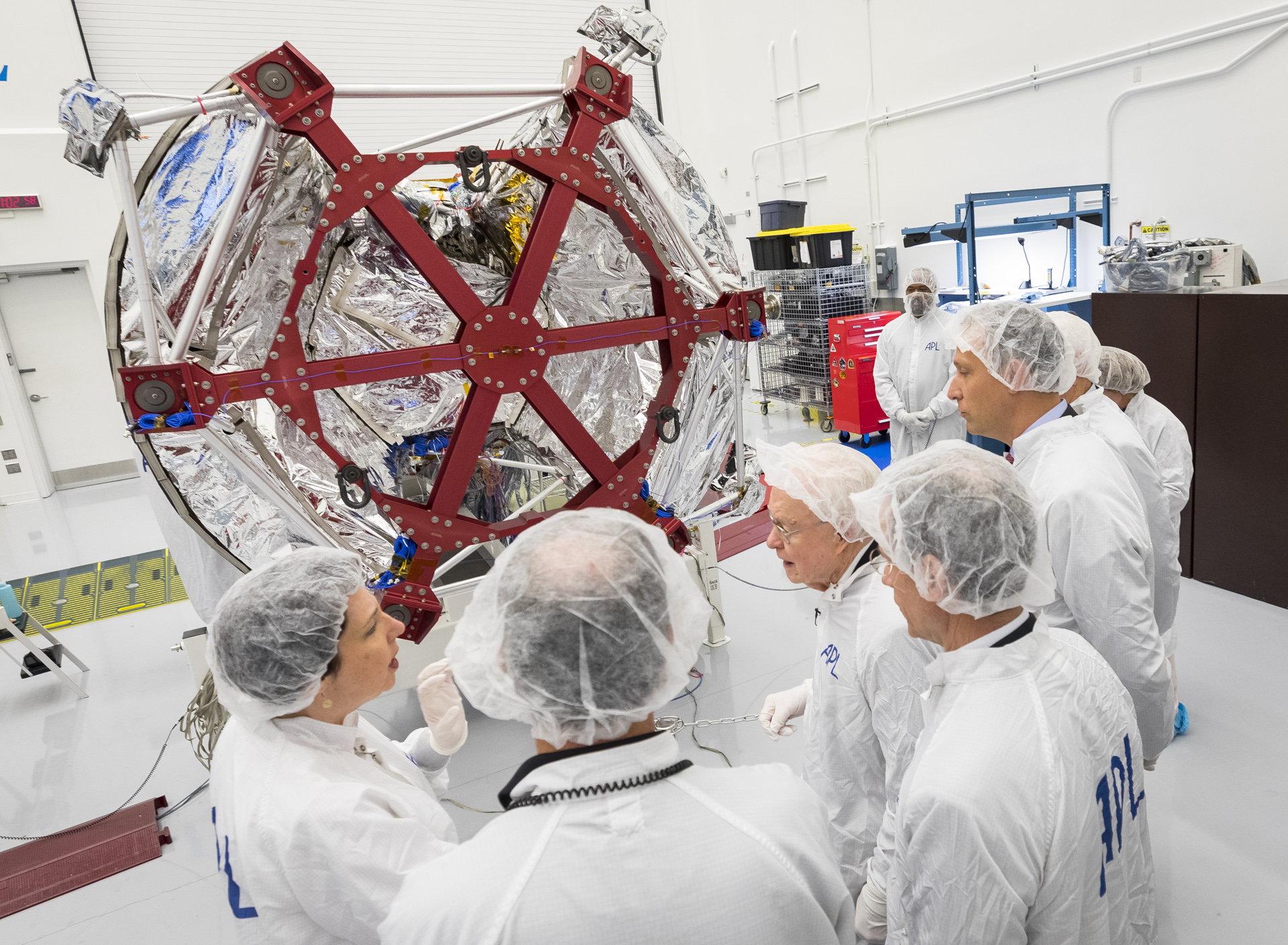
GeneParkerVisitSCAPL
Credit: NASA/Johns Hopkins APL/Ed Whitman
High-Res Image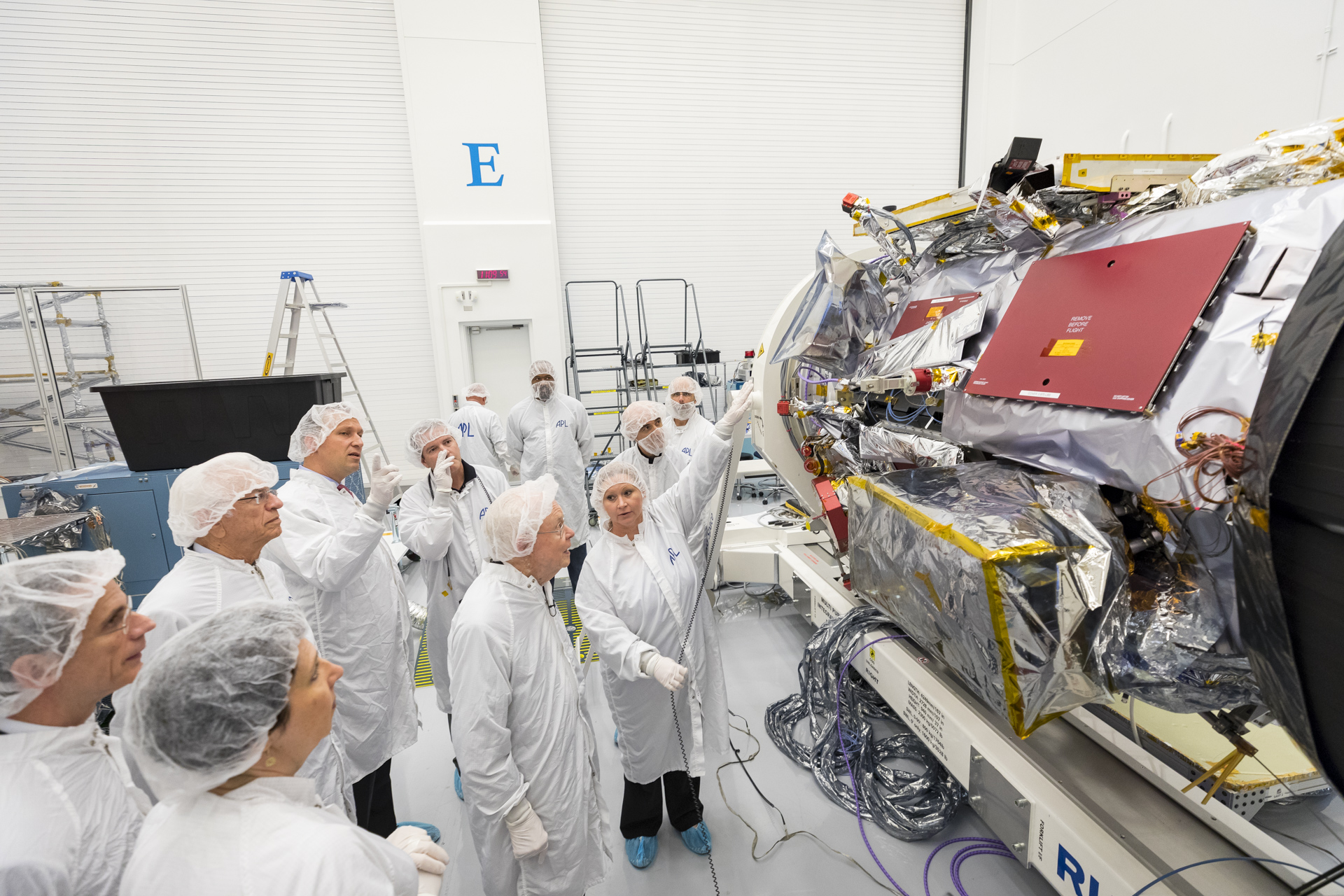
GeneParkerVisitSCAPL
Credit: NASA/Johns Hopkins APL/Ed Whitman
High-Res Image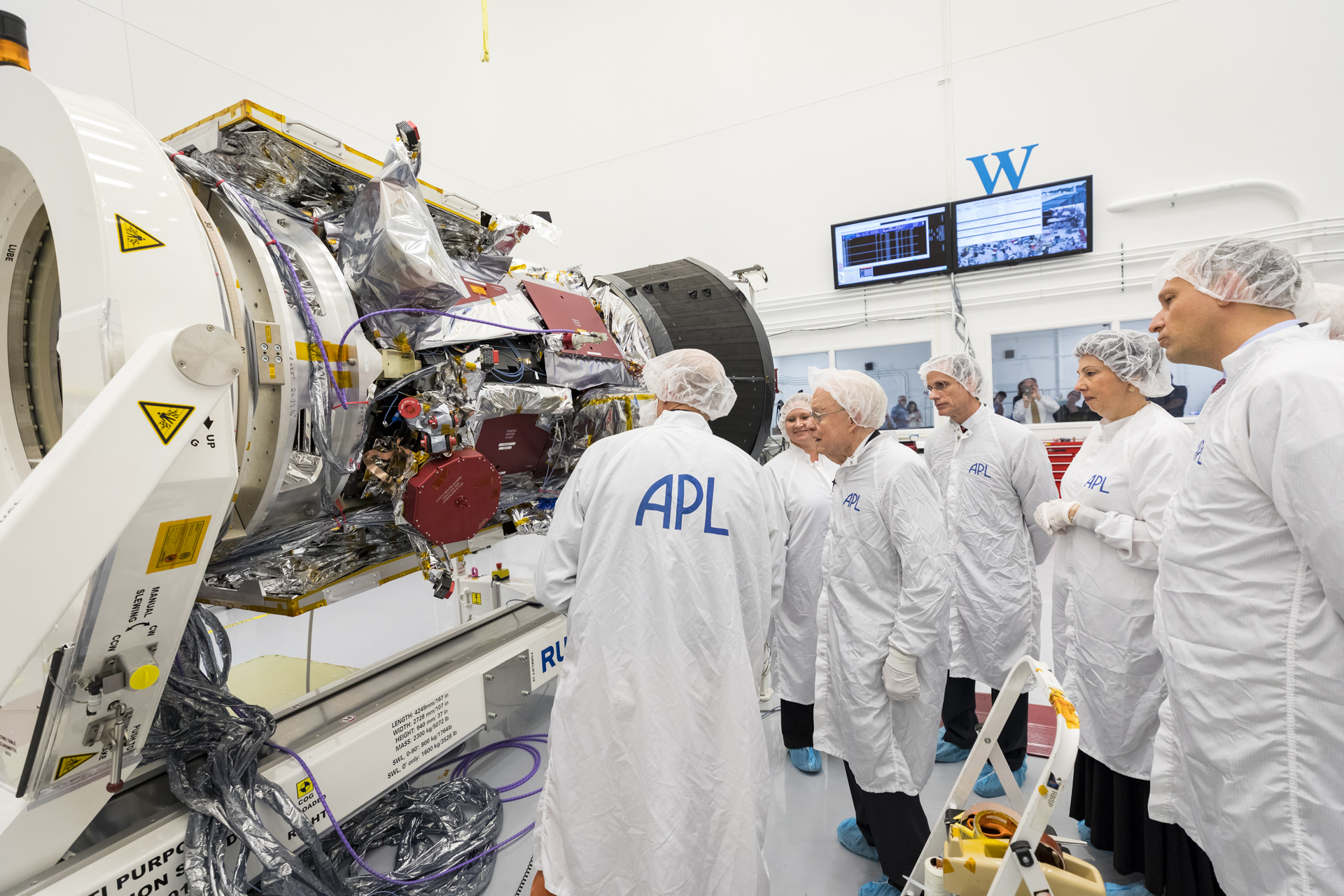
GeneParkerVisitSCAPL
Credit: NASA/Johns Hopkins APL/Ed Whitman
High-Res Image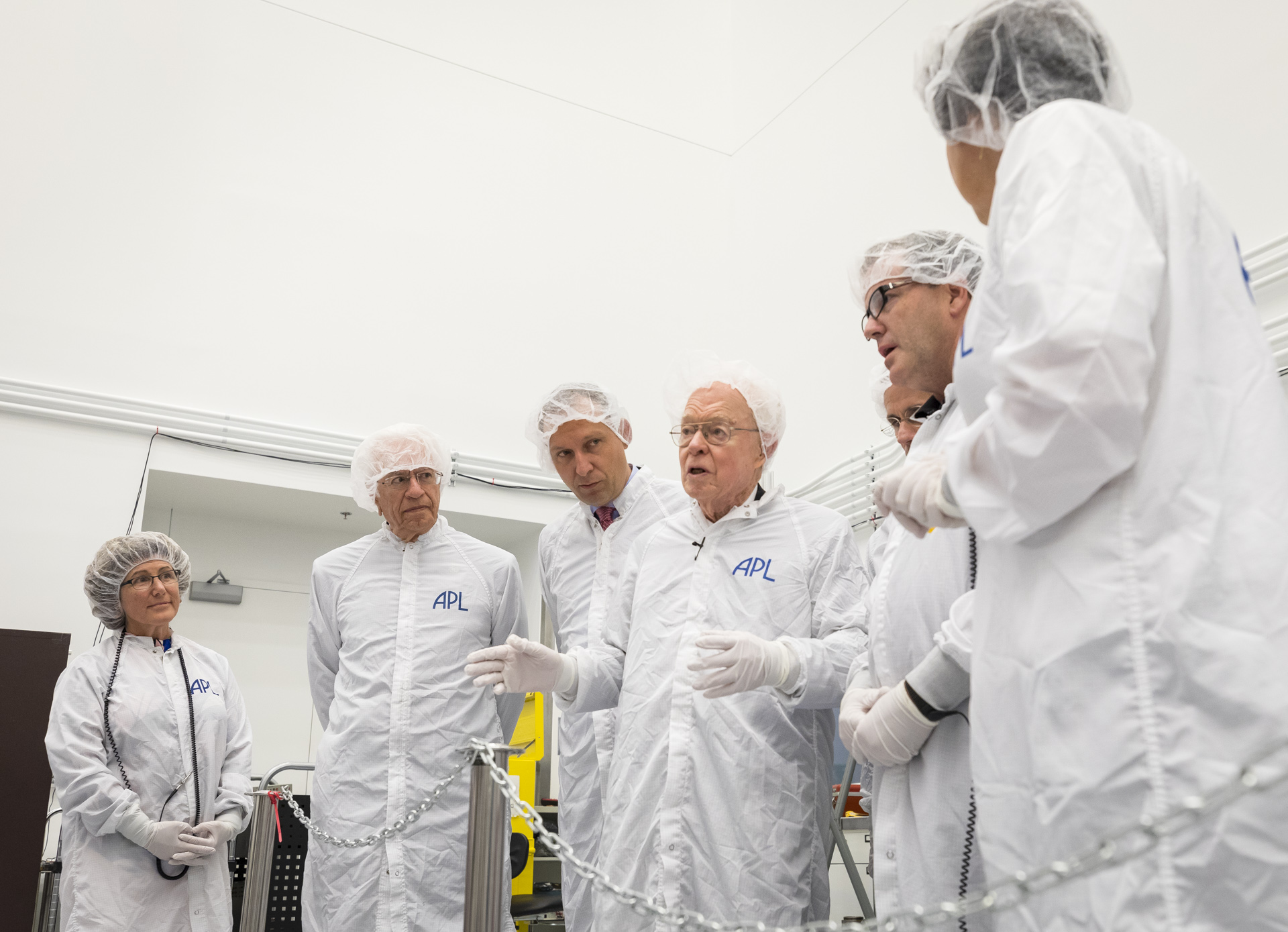
GeneParkerVisitSCAPL
Credit: NASA/Johns Hopkins APL/Ed Whitman
High-Res Image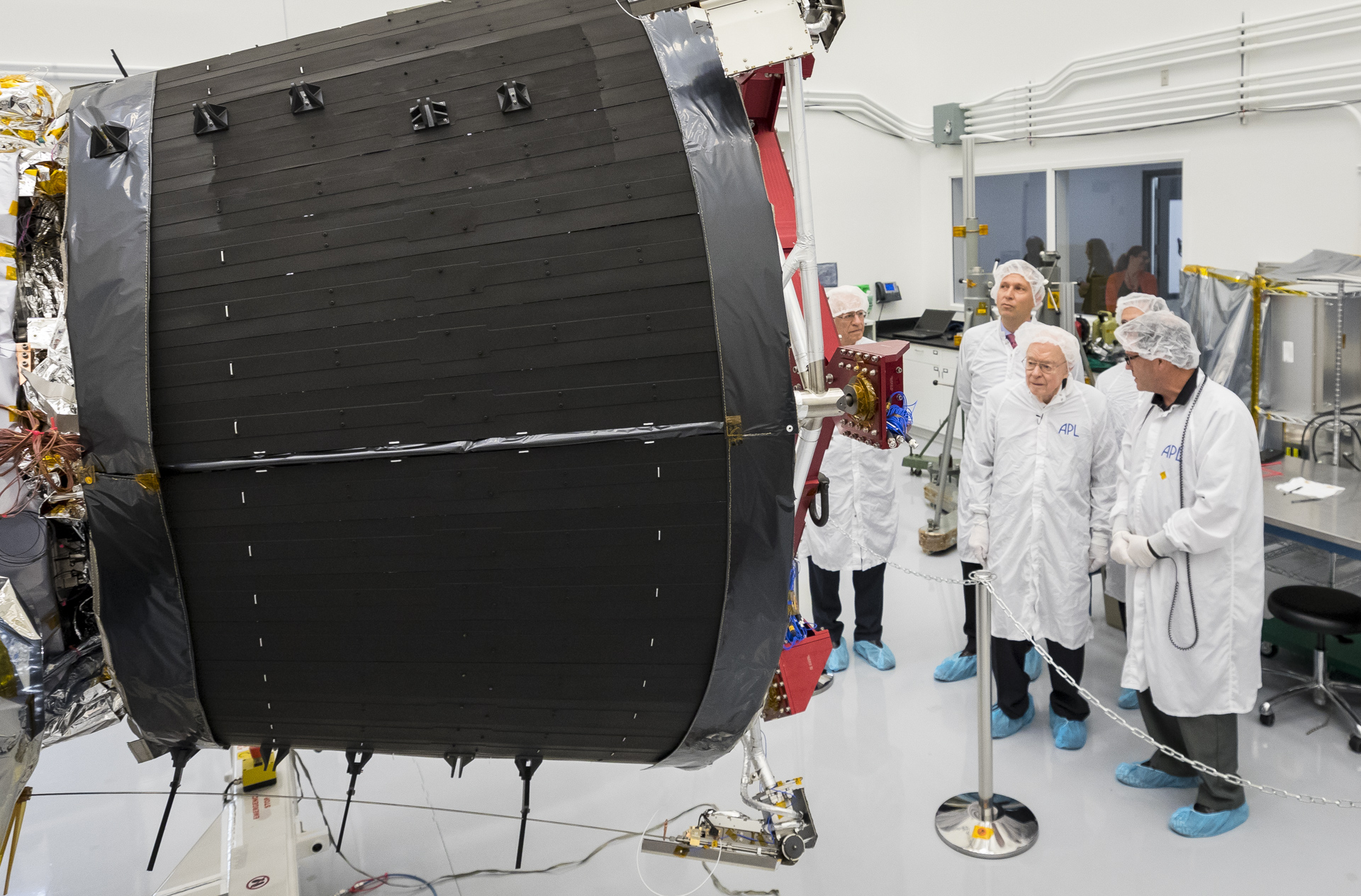
GeneParkerVisitSCAPL
Credit: NASA/Johns Hopkins APL/Ed Whitman
High-Res Image